- | 8:30 am
Microsoft reinvents the mouse for people with disabilities
A new wireless button design will let anyone make Microsoft’s hardware their own.

The mouse looks tiny. It’s a small square, reminiscent of one of those novelty mice sold to people who refuse to use the trackpad on their computer. It has two buttons and a scroll wheel, and when Microsoft claims that this new mouse has been designed alongside people with disabilities, I’m skeptical.
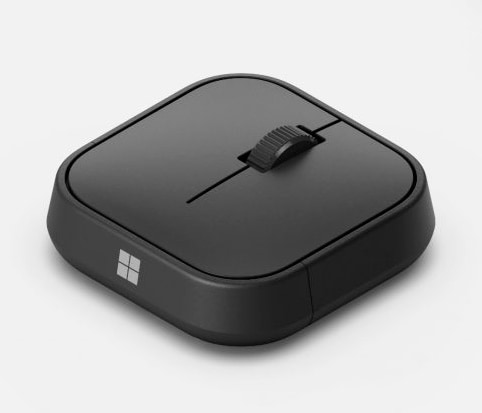
[Photo: Microsoft]
And then Gabi Michel, director of accessible accessories at Microsoft, demonstrates how this tiny mouse has been designed to slide perfectly into its “tail”—a large ergonomic grip that your hand can grasp almost like a ball, switching from left- to right-handed configurations with a simple squeeze. Then she pops it out and slides it into a different tail (this one with large finger indentations for people with tremors) and then another (with a longer and even more pronounced set of finger indentations).“No two people are going to be the same,” Michel says. “Everyone needs a different solution.”
The mouse is part of Microsoft’s new Adaptive Accessories line, a kit of tools meant to provide an easier mouse and keyboard experience for people with disabilities—on a PC or phone. The entire kit consists of three main components: the mouse, a button that has programmable pressure sensors underneath, and a hub to connect them all. The hub can be used with the mouse, a keyboard, plus any other assistive devices one might have, whether they’re made by Microsoft or not (wirelessly via Bluetooth or through the hub’s many ports). Everything will be available later this year for an as-yet-undisclosed price.
While small, the accessories signal that Microsoft plans to enable accessibility not by building any one perfect design, but by designing platforms for easy user customization.
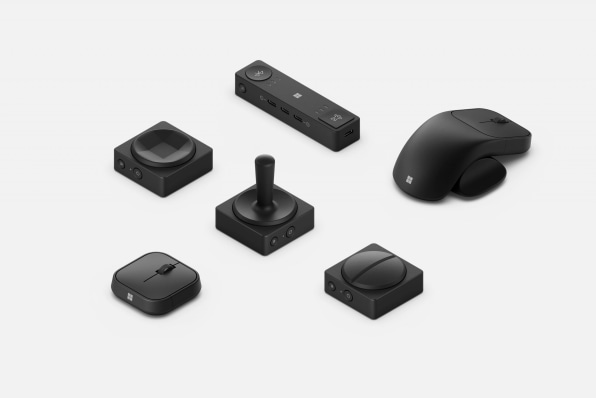
[Photo: Microsoft]
A BRIEF HISTORY OF MICROSOFT’S INCLUSIVE DESIGN STRATEGY
The project is landmark in that it’s the first assistive hardware that Microsoft has designed for the core PC user, but it’s hardly Microsoft’s first foray into building assistive devices. You can trace the lineage of this hardware all the way back to Microsoft’s investment in inclusive design in 2016, when Kat Holmes and the late August de los Reyes helped pioneer a new approach to design, in which designers created products alongside prospective users.
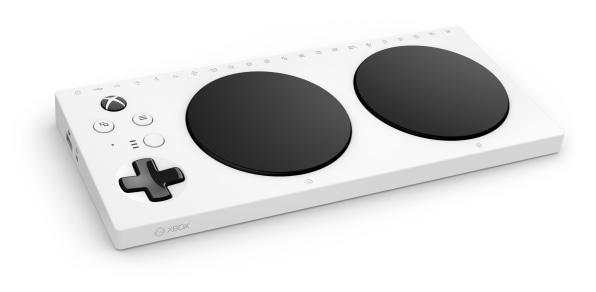
[Photo: Microsoft]
Then in 2019, the company released the Xbox Adaptive Controller, a supersized game pad for people who lack fine motor control. (Microsoft later teamed with Logitech on a series of chunky buttons to add to this controller.) Last year, Microsoft released a series of simple stickers to make its Surface computer easier for anyone, regardless of ability, to use.
Microsoft even constructed a new Inclusive Tech Lab, where people with various disabilities offer feedback and ideas to Microsoft’s designers. The company notes that 1 billion people around the world are living with a disability, and that almost everyone will encounter times of disability in their lives.
As important as the Xbox and Surface are to Microsoft, they pale in comparison to the gargantuan industry of PCs—340 million new PCs shipped in 2021 alone. And 1.3 billion smartphones shipped over that time, for which these products also work. So it is safe to look at the new Adaptive Accessories line as a codification of Microsoft’s strategy.
“We don’t want people to adapt to the device; we want the device to adapt to the person,” Michel says.
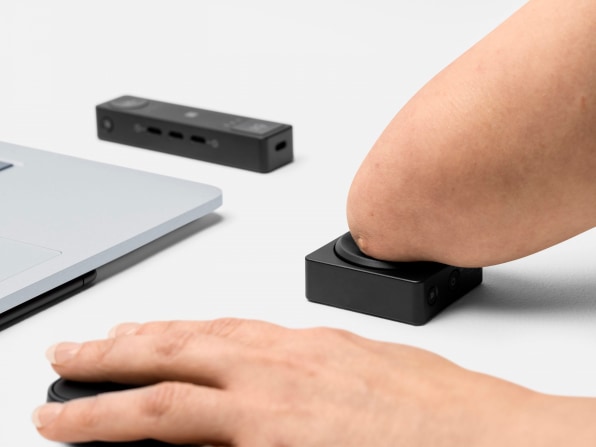
[Photo: Microsoft]
Nowhere is that idea more evident than in the new Microsoft Adaptive Button. Like the mouse, it’s a small square, and it features eight pressure sensors on top. With the twist of a hand, you can swap different button designs. That means you can put one big button on top of the mouse, or you can put a joystick on top of it. The default mode is an eight-direction pad that looks straight off an Xbox Elite controller.That recognizability is by design, so that when most people look at the button, they’ll understand what it’s capable of. Pressing it gives someone the ability to move a cursor with precision in any direction. And yet, each of those directional buttons is also programmable, so users can customize them to do anything from a simple keystroke to complex macros.
“I have a macro that lets me send an email with one press,” Michel says. “It opens Outlook, I dictate, then it sends the email.”
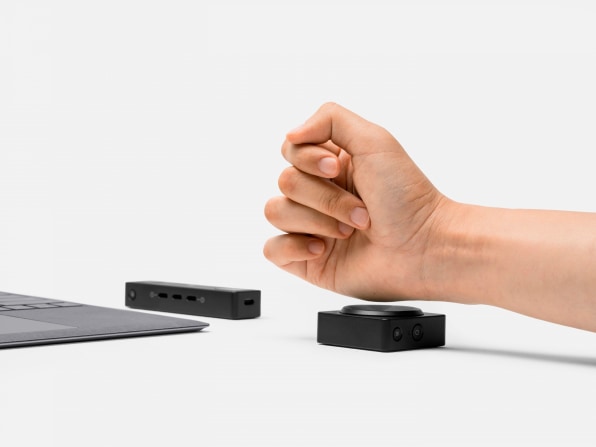
[Photo: Microsoft]
Despite the button’s capacity to support eight directions, Microsoft suggests some people might want just two buttons. So designers created a button that looks something like a big pill of ibuprofen, with a line splitting the middle of the circle, turning one button into two. Why two buttons when you could have eight?“It is definitely something that has come from the input from the community,” Michel says. “One of the people who was in our beta group is someone who struggles with using a scroll wheel. So what she’s doing is, she takes the dual button, flips it vertically, and uses it as a scroll wheel [using the buttons for up and down].”
Microsoft is listening to feedback from its users and trying to think of every possible need. That comes down to the core ergonomics of its devices. They’re relatively small, and require the ability to press tiny indentations and twist in a specific motion to handle them. That small size was another intentional decision based on community feedback. Namely, everyone travels, and people with disabilities are often lugging around extra equipment to do so.
As for installation, Michel says, “We have a group of beta participants using it who are setting it up on their own,” though she mentions that in some cases users will need assistance from an ally.
I imagine assistance will be especially important for many users when they need to recharge these devices. Because instead of using capacitive contact charging, like we see on Apple’s Magsafe charger for iPhone, the hub, mouse, and buttons must be plugged into a tiny USB-C port for more power. Knowing that I routinely struggle with these ports as an able-bodied person, I’m cautious of how the wider community will react.
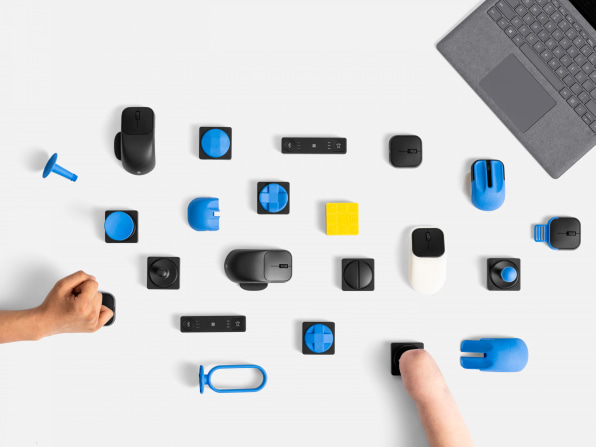
[Photo: Microsoft]
WHAT’S NEW? IT’S CUSTOMIZABLE BY DESIGN
Consumer demand to customize mice and keyboards is hardly limited to people with disabilities. We all customize our work setups. “I guarantee you my mouse and keyboard setup is different from yours,” Michel says. “The mouse [that’s] comfortable to my hand, even a traditional hand, is probably different than yours.”
Because people with disabilities have even more specific needs, Microsoft is providing CAD files for anyone to design and 3D print their own add-ons for their mouse and button controller. That may sound like Microsoft is punting the problem to someone else, but it isn’t. Microsoft is offering many printable options that it has already designed via the 3D-printing company Shapeways, and everything blue you’ve seen in this story has been 3D printed.
Microsoft insists that 3D printing was not selected for its cost savings. Yet it’s easy to understand the benefit of Microsoft leaving some of its own official accessories to be produced on demand: They might not be purchased in such vast numbers that it makes sense for the company to produce costly injection molds and manage the inventory to sell them. But that’s precisely what one-off prints are good for.
Enabling one-off prints is also a taste of how Microsoft is willing to quell its own IP protection for a greater good. Traditionally, the company has been strict about who can make official Xbox accessories—only offering the option to license its wireless controller technology in 2016. But supporting modification rather than stopping it is the natural consequence of Microsoft standing by its inclusive ethos.
It’s also part of a larger trend in which tech companies are (slowly, hesitantly) ceding control to ensure loyal, long-term customers, much as we’ve seen Apple allow consumers to repair more of its products.
“We embraced it, and we embraced knowing it’s not one-size-fits-all,” Michel says. “It has to be one-size-fits-one if you want to truly remove the barrier and empower every person, which is our company mission.”




































